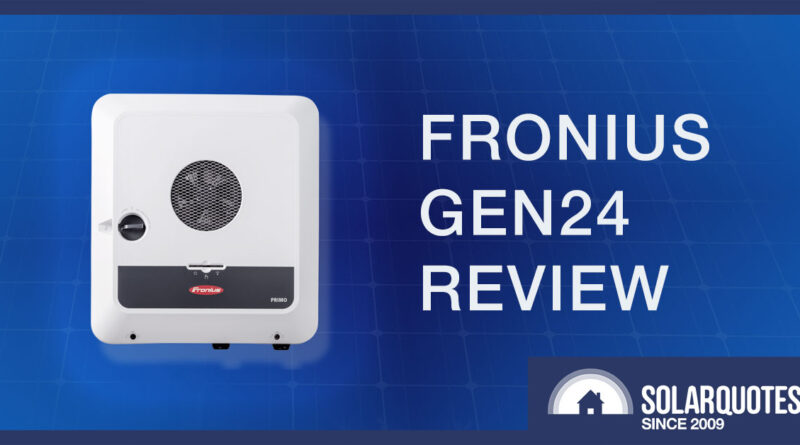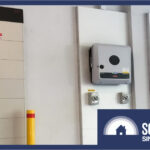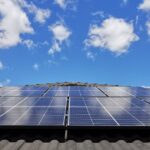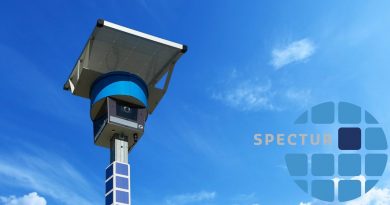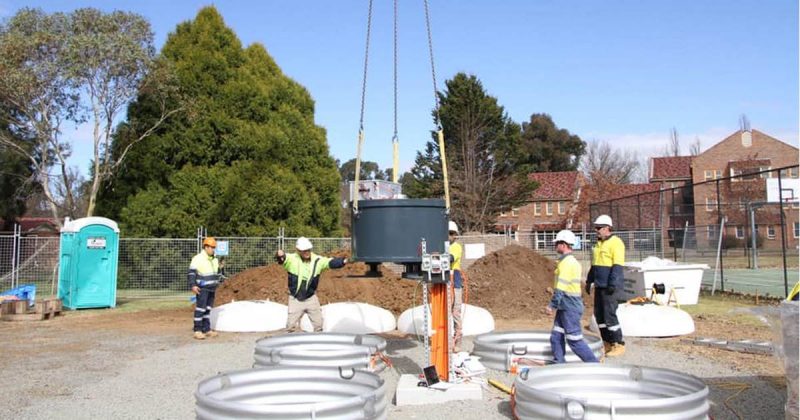Fronius Gen24 Review: A Solar Installer’s Considered Opinion
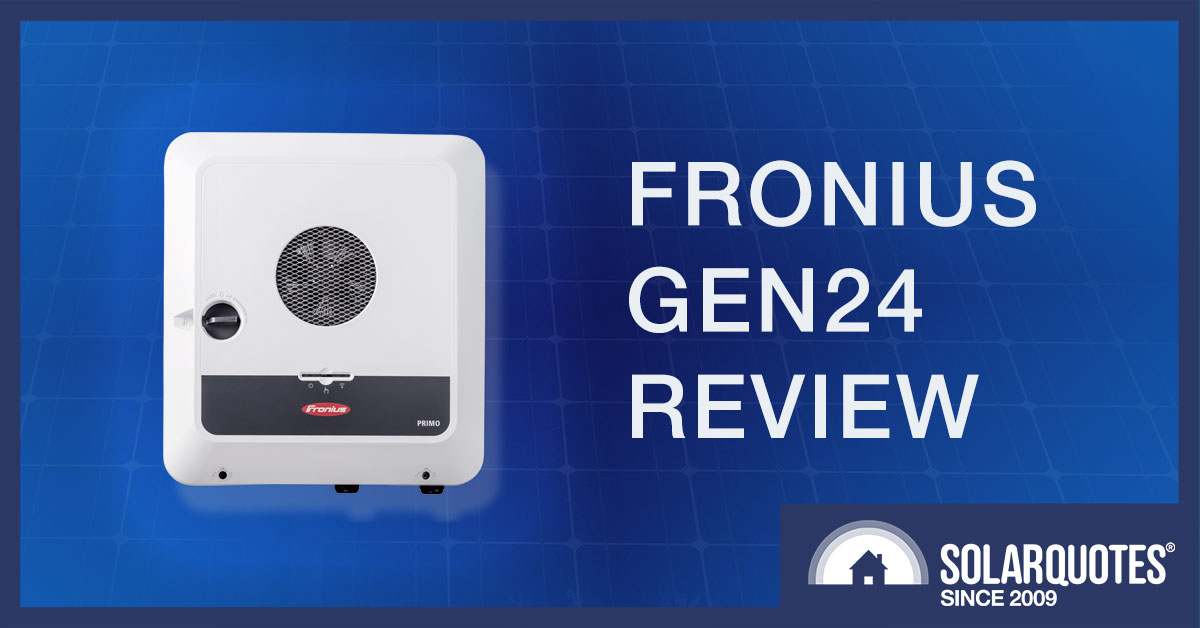
Today I’m reviewing the Fronius Gen24 inverter – Fronius’ latest solar inverter – which supersedes their wildly popular and ever-dependable SnapINverter range in Australia.
Based on my experience in the field, I’ll be looking at the pros and cons and the technical specifications to help you decide if the Gen24 is the right fit for your own solar energy system.
From its modular design to its active cooling system and innovative backup power supply, the Fronius Gen24 has a lot to offer. But is it worth the investment? After all, it’s at least $700 more than some other good solar inverter options.
Let’s find out.
Overview of the Fronius Gen24
Arguably a reassuringly expensive solution, the Gen 24 is a fairly new device, and I suspect it will further cement Fronius’ market leadership down under. These inverters are a good, solid first-world solution, and despite what the haters of fan noise say, the Fronius Gen24 has active cooling for a very good reason: the more heat you remove from the power electronics, the longer they will last — an important feature in our sunburnt country.
The Fronius Gen24 is also an order of magnitude quieter than the previous models.
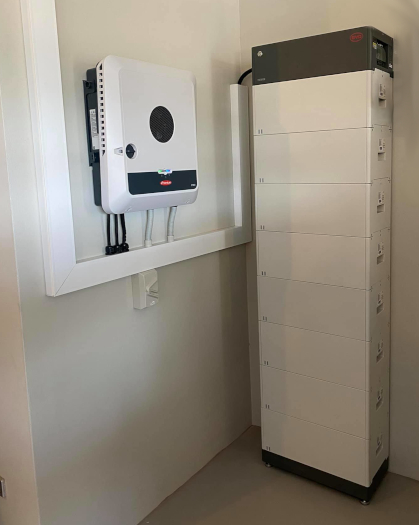
Beautifully executed Gen24 with 8-cell stack. Credit to Jae Taylor at Joondalup Electrical Services
Design and Sustainability Features
The Gen24 has been designed with sustainability from the outset, and I’m not just talking about how they refuse to pack it in polystyrene. The modular nature of what’s under the cover means your service technician can replace parts in the field without shipping the whole unit to Fronius for repairs. I’ve done it myself with earlier models, and it’s a great way to save time, money and energy, especially when the Fronius technical support service is so good. I’ve mentioned it before, but it’s worth repeating that having support on the phone for commissioning and warranty is priceless. But don’t take my word on Fronius Australia’s support and service; just read all the happy Fronius reviews from Australian consumers.
😁Fronius Monitoring App Is Good And Getting Better
Fronius also has SolarWeb, a great free app for monitoring production and consumption. But if you want some of the extra features, you’ll need to pay a $33 per year subscription. The most useful ‘premium’ features are:
- Unlimited history – instead of just three days
- Return on investment data
- PV production forecast
The new PV production forecast uses satellite weather data with a 100m resolution to tell you what your solar production should be for the rest of the day. Currently, it only looks forwards, but they have all the weather data to look backwards. If they simply add a ‘looking backwards’ feature in the SolarWeb app, they could show you what your energy production should have been versus what it was, helping consumers see how well their system is performing and if it’s time for a service – similar to the pricier Solar Analytics monitoring service. Although if you do want the whizz-bang Solar Analytics monitoring – their cloud monitoring is directly compatible with the Fronius Inverter’s external smart meter.
😮 Backup Without A Battery – Albeit Very Limited
I’m not sure anyone else has a basic backup power supply without a battery. Fronius calls it “PV Point”; if there’s enough sunshine, you can charge your phone or run other modest devices from a dedicated emergency powerpoint. 3kW is actually pretty good (i.e. 12amps), and even though the solar irradiance might vary, the Fronius will deliver as much electricity as there is daylight to power it.
😌Gen 24 Solar Inverter Can Upgrade To Batteries
Of course, if you want a comprehensive full backup emergency power supply, then you can pay for a firmware upgrade, add a BYD battery and some control gear in the switchboard, then Gen24 will deliver a pretty gutsy output for a single phase or a three-phase supply. (though the small three-phase units don’t offer full backup) Firmware to control a battery costs between $650 – $1000; the smaller the inverter size, the lower the price.
Bear in mind that – unlike most other hybrid inverter manufacturers – Fronius don’t provide a pre-built ‘backup box’, so you’ll need a good sparky who can do all the backup wiring themselves – essentially making their own backup box from scratch:
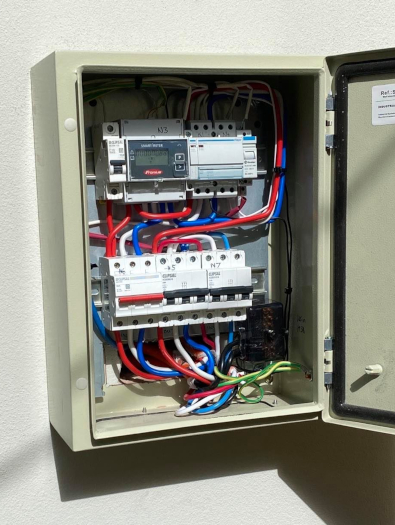
3 phase backup of a Gen 24 will typically need 12 ‘poles’ of space in your main switchboard but doesn’t require a separate cable run for the essential circuit out of the inverter, saving on cable and losses. This example is 20 poles. Credit to Jae Taylor at Joondalup Electrical Services
For example, the 6kW single-phase machine (Primo) will deliver just that, plus a surge rating of 8.2kW for 5 seconds. The three-phase 10kW variant (Symo) delivers a nominal 16amps or 3.68kW per phase and a surge of 12.4kW total (4.1 per Phase). However, to get these numbers, you must have enough battery capacity stacked up behind them.
Two classes of batteries are available, and each can be in several different sizes. Bear in mind that some can be expanded more than others. If you need extra storage later, they’ll scale incrementally to 35 or 68kWh.
The actual max. sizes can vary per inverter, but in general it’s as below:

😬The Gen24 Will Raise Your Frequency In A Blackout
When running off grid the Gen24 will boost the supply frequency to 53Hz to deliberately bump other energy sources off the system. This can make clocks run fast and give your coffee machine a headache. It also means that only one Gen24 will operate in backup mode unless you do some mildly tricky wiring. They will, however, talk to the same monitoring platform, so if you already have a Fronius system, they will appear on Fronius Solarweb together. The warranty is void if you run off-grid for more than 20% of the time.
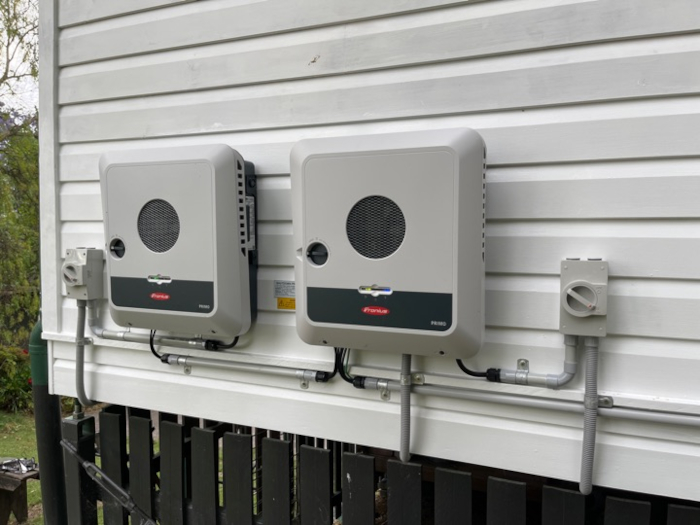
🙄 90-Second Switchover Time?
The other complaint/feature of the Gen24 is that when the grid does fail, it takes up to 90 seconds for the inverter to fire up in off-grid mode. Like SolarEdge and some others, this is a safety function to ensure the grid is really gone. While it might seem painful, it’s also an unmissable analogue warning signal, so you can turn things off to preserve your battery. The specified ‘up to’ ninety seconds does seem like an inordinately long time, though. Fronius has recently assured me that the latest firmware update has that down to 20 or 30 seconds, but that’s still quite a wait compared to the SolarEdge battery’s three seconds.
🧐Fronius Ecosystem and Energy Management
The last point I’ll make for Fronius is that they have an ecosystem of other devices, such as the Ohmpilot for hot water and the Wattpilot for car charging, but not only that, they have open communication protocols and relay contacts to drive third-party devices. I have set up a “sunshine circuit” to run a hot water service with surplus solar using programmable priorities to manage energy flows. It works well.
🤔Warranty and Battery Life Considerations
All in all, it’s a pretty solid choice. Fronius offer 5+5 years warranty, which I’ve used before, and the procedure is good. If you are considering adding a BYD battery, the BYD warranty specifies it’ll retain 60% of its usable energy for ten years, or 3Mwh throughput per kWh installed. All is well and good, but the issue with this figure is that if you use the battery’s full capacity daily, you won’t reach ten years.
So 42690kWh ÷ 13.8kW nominal = 30930days or 8½ years
Or 42690kWh ÷ 10years ÷ 365days = 11.69kWh/day
In the real world, where you may not fully charge or fully discharge the battery daily, then 11.69kWh is probably realistic, but technically, the warranty only scores 8.5 out of 10 from the judges.
🤓Fronius Gen24: Technical Specs
Fronius Gen24 ‘Primo’, Single-phase inverters are available in 3 to 6kW versions. The ‘Symo’ three-phase inverters are available in 3 to 10kW versions.
These are the specs for a typical system: a single-phase 6kW system paired with a 13.8kWh BYD battery:
- Nominal capacity: 6kW
- Surge rating: 8.2kW
- Solar capacity: 9kW
- PV current ratings: 22 & 12amp nominal – 33 & 18amp short circuit – A and B input respectively
- Inverter Warranty: 5 + 5 years
- Battery: BYD
- Usable Capacity: 13.8 kWh
- Warranty: 10 years – 60% remaining capacity – 42.69MWh throughput
- Throughput limit @ 1 full cycle per day: 8 ½ years
- Approx retail: $3950 inverter + $11367 battery = $15317+ installation
- $-per-usable-kWh: $1110
- $-per-warranted-kWh :$0.358 @ 1 cycle per day / $0.179 @ 2 cycles per day
- Three-phase option available with different specifications
😍Summing Up, My Fronius Gen24 Review: It’s One Of The Best
The Fronius Gen24 hybrid solar inverter is a high-quality, relatively high-priced solar inverter that can be upgraded to handle batteries anytime. Boasting impressive features such as a modular design, active cooling, good monitoring and PV Point for basic backup power supply without a battery, it’s a reliable choice for your solar power system. The compatibility with BYD batteries and integration with other Fronius devices and third-party products makes it a versatile option.
If you are using the Fronius Gen 24 with the recommended BYD battery, it’s important to remember the BYD battery’s warranty limitations and the long delay when switching to off-grid mode. Also, your sparky will need to build their own ‘backup box’ as Fronius don’t supply a pre-built one. Despite these minor drawbacks, the Fronius Gen24 remains a solid and well-rounded choice for those looking to invest in a solar or hybrid solar inverter system. With a reputation for quality, the Fronius Gen24 is my top choice for Australians who want a reliable, high-performance solar or hybrid inverter.
Original Source: https://www.solarquotes.com.au/blog/fronius-gen24-review/

